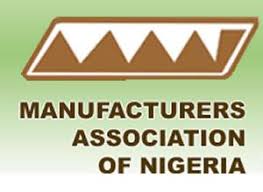The Manufacturers Association of Nigeria (MAN) has stated that realizing Nigeria’s desire to achieve a $1 trillion economy in 2030 would require strategic transformation of the foundational structure of the Nigerian economy, particularly the industrial sector, and sustained annual GDP growth rate of 7.0 per cent.
This was stated by the Director General of MAN, Mr. Segun Ajayi-Kadir, in his response to THISDAY’s question on whether Nigeria could achieve the projected $1 trillion economy in 2030.
Ajayi-Kadir said that achieving $1 trillion economy by 2030 is ambitious but a technically attainable goal over the medium to long term.
He, however, said that “achieving this target is not a matter of arithmetic growth. It demands a strategic transformation of the economy’s foundational structure, particularly the industrial sector.
“With the newly rebased nominal GDP at $243 billion, reaching the $1 trillion threshold by 2030 would require consistent nominal growth between 12 per cent and 14 per cent annually (assuming currency stability), or real GDP growth between 6.0 per cent and 7.0 per cent per annum, a figure that is nearly double the current real growth rate of 3.38 per cent recorded in 2024.”
Ajayi-Kadir also noted that the road to this milestone is fraught with structural bottlenecks that must be urgently addressed.
He pointed out that a growth path that merely expands the size of low-productivity sectors, such as informal trade and consumption-driven services would only deepen inequality, reinforce economic vulnerability, and perpetuate jobless growth.
He, therefore, called on the federal government to make industrial transformation the anchor of Nigeria’s economic strategy.
“Achieving a $1 trillion economy is not simply about increasing output. It is about building an economy that works, that creates jobs, that competes, and that uplifts the majority. Without a strong, modern, and competitive manufacturing base, the $1 trillion goal may be a struggle that is measured only in numbers, but not in national prosperity,” he said.
He declared unequivocally that the credible path to a $1 trillion economy is prioritization of an industrial-led development model.
“This requires a deliberate and strategic revival of industrial output, with a particular focus on high-value-added and exportable manufactured goods, supported by unmitigated government patronage. Reliable and affordable energy supply must be central to this effort; without stable and cost-effective electricity, the manufacturing sector cannot thrive and contribute meaningfully to the GDP.
“Equally critical is the upgrade of core infrastructure such as transport networks, logistics systems, and broadband connectivity to support efficient production and regional trade integration,” he said.
He also said that “A coherent, investor-friendly policy environment across fiscal, trade, and monetary domains are also essential to attract and retain long-term capital. Above all, Nigeria must boost productivity across strategic subsectors such as agro-processing, textiles, pharmaceuticals, and light engineering, where industrial linkages and employment potential are strongest.”
According to him, strengthening the Naira, curtailing inflation and ensuring inclusive and sustained growth are essential components of any credible path that would lead to the attainment of $1 trillion economy for Nigeria.
He, however, warned that, “we should avoid seeing the actualization in nominal terms that may be inflated by rising prices because such kind of growth without real sector expansion risks being purely cosmetic.”
He pointed out that any substantial depreciation of the Naira against the United States of America’s dollar would undermine progress toward the $1 trillion GDP as the target is dollar-denominated.

